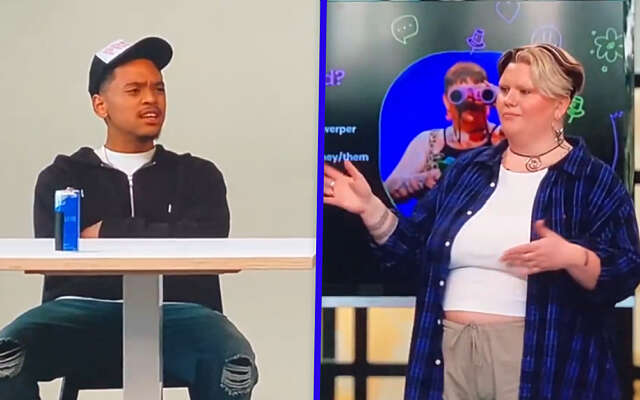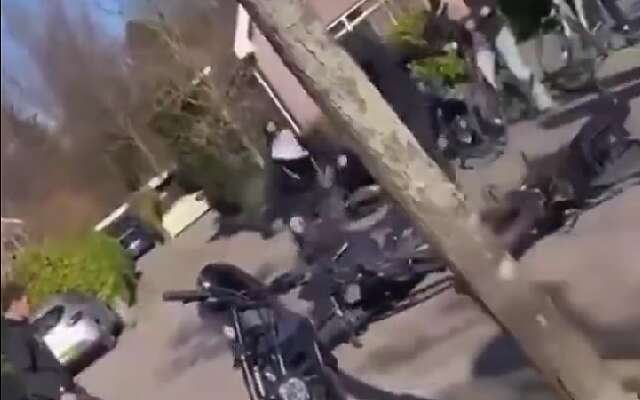Biggest voting sample ever shows: liberal D66 (ALDE Group) wins European elections in Netherlands
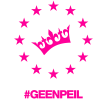 Dutch liberal party D66 wins the European elections in the Netherlands. The member of the ALDE group of the European Parliament is to get 5 seats out of the 26 available Dutch seats. This means D66, the party of Marietje Schaake and Sophie in 't Veld, wins two seats. That is the outcome of a nationwide vote count, conducted against the wishes of the European Commission by the weblog GeenStijl. Due to this "clandestine" count of real votes, GeenStijl is the only one who is able to predict a plausible outcome of the EU elections in the Netherlands. After D66, the christian democrat CDA of the EPP comes in second, but loses one seat and drops to 4 in the EP. Geert Wilders' Party for Freedom (PVV) loses 2 seats and drops to 3, despite his party's lead in national polls. The liberal right VVD, the party of Dutch PM Mark Rutte hold their fort at 3 - same as in 2009. Same goes for the social-democratic PvdA, their coalition partner in the Dutch government. On the left side, the GroenLinks (Greens) loses 1 seat to the animal party PvdD. The euro-sceptical socialist party SP hold on to their three seats. Christian combination CU/SGP also hold their two shared seats in the European Parliament. 50PLUS, the "babyboomer party", most likely doesn't pass the treshold for a seat, while Artikel 50 party leader Daniël van der Stoep loses his one seat in the EP before Sunday, when the official numbers are released.
Dutch liberal party D66 wins the European elections in the Netherlands. The member of the ALDE group of the European Parliament is to get 5 seats out of the 26 available Dutch seats. This means D66, the party of Marietje Schaake and Sophie in 't Veld, wins two seats. That is the outcome of a nationwide vote count, conducted against the wishes of the European Commission by the weblog GeenStijl. Due to this "clandestine" count of real votes, GeenStijl is the only one who is able to predict a plausible outcome of the EU elections in the Netherlands. After D66, the christian democrat CDA of the EPP comes in second, but loses one seat and drops to 4 in the EP. Geert Wilders' Party for Freedom (PVV) loses 2 seats and drops to 3, despite his party's lead in national polls. The liberal right VVD, the party of Dutch PM Mark Rutte hold their fort at 3 - same as in 2009. Same goes for the social-democratic PvdA, their coalition partner in the Dutch government. On the left side, the GroenLinks (Greens) loses 1 seat to the animal party PvdD. The euro-sceptical socialist party SP hold on to their three seats. Christian combination CU/SGP also hold their two shared seats in the European Parliament. 50PLUS, the "babyboomer party", most likely doesn't pass the treshold for a seat, while Artikel 50 party leader Daniël van der Stoep loses his one seat in the EP before Sunday, when the official numbers are released.With a voter turnout of 35%, the bustle at the polling stations was at a "regular low" for EU elections in the Netherlands. 65% of the people is either seemingly uninterested in the European Parliament, or unimpressed with the supranational powers of the EP. National elections have a turnout of around 75%.
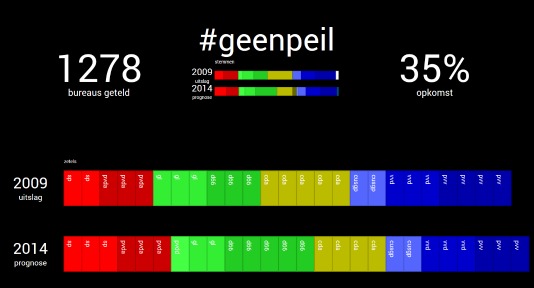 Collecting votes despite the embargo
The European Commission prohibited the Dutch government to release the May 22 election results, because most European countries do not vote until Sunday. GeenStijl deemed this embargo undemocratic and at variance with democratic transparency, so the weblog asked its readers to attend the counting of votes in polling stations around the country, and then asked them to send in the results. GeenStijl made use of a rule in Dutch electoral laws that requires the outcome of elections to be read out loud at the countrys approximately 10,000 voting stations, but doesnt forbid the results from being recorded. Minister of the Interior, Ronald Plasterk, told the European Commission that GeenStijl operated within the boundaries of Dutch electoral law. He wrote this to Brussels after European Commisionar Viviane Reding demanded a clarification on the actions of GeenStijl from the Dutch government.
Using their unprecedented method of data collection, GeenStijl managed to gather the results of 1287 polling stations, collecting a grand total of 664,316 votes - or 14.5% of the total number of votes. Real votes, not exit poll numbers. It is percentage-wise the biggest voting sample ever conducted, and it's the first time this many people attended the public vote counting with the intention to reach a plausible national result. With 1 in 6 Dutch votes collected, and after weighing them against demographic and statistical data, GeenStijl feels they managed to present an outcome that is approximately 98.5% accurate. A per municipality breakdown of the results kan be found at geenstijl.nl/eu2014/resultaat/.
Collecting votes despite the embargo
The European Commission prohibited the Dutch government to release the May 22 election results, because most European countries do not vote until Sunday. GeenStijl deemed this embargo undemocratic and at variance with democratic transparency, so the weblog asked its readers to attend the counting of votes in polling stations around the country, and then asked them to send in the results. GeenStijl made use of a rule in Dutch electoral laws that requires the outcome of elections to be read out loud at the countrys approximately 10,000 voting stations, but doesnt forbid the results from being recorded. Minister of the Interior, Ronald Plasterk, told the European Commission that GeenStijl operated within the boundaries of Dutch electoral law. He wrote this to Brussels after European Commisionar Viviane Reding demanded a clarification on the actions of GeenStijl from the Dutch government.
Using their unprecedented method of data collection, GeenStijl managed to gather the results of 1287 polling stations, collecting a grand total of 664,316 votes - or 14.5% of the total number of votes. Real votes, not exit poll numbers. It is percentage-wise the biggest voting sample ever conducted, and it's the first time this many people attended the public vote counting with the intention to reach a plausible national result. With 1 in 6 Dutch votes collected, and after weighing them against demographic and statistical data, GeenStijl feels they managed to present an outcome that is approximately 98.5% accurate. A per municipality breakdown of the results kan be found at geenstijl.nl/eu2014/resultaat/.
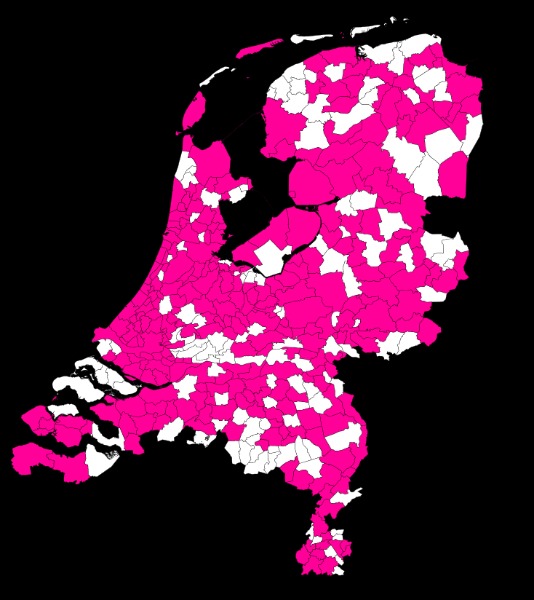 About GeenStijl
GeenStijl made some waves in Europe last year, when it videotaped MEPs who signed in to the attendance register for a plenary session in the EP, cashed their fee, and then left. Two MEPs, Miloslav Ransdorf and Raffaele Baldassarre responded agressively to reporter Tom Staal when confronted with their behaviour. See here for the video.
Amsterdam, 23 May 2014
PLEASE RT.
About GeenStijl
GeenStijl made some waves in Europe last year, when it videotaped MEPs who signed in to the attendance register for a plenary session in the EP, cashed their fee, and then left. Two MEPs, Miloslav Ransdorf and Raffaele Baldassarre responded agressively to reporter Tom Staal when confronted with their behaviour. See here for the video.
Amsterdam, 23 May 2014
PLEASE RT.
 Collecting votes despite the embargo
The European Commission prohibited the Dutch government to release the May 22 election results, because most European countries do not vote until Sunday. GeenStijl deemed this embargo undemocratic and at variance with democratic transparency, so the weblog asked its readers to attend the counting of votes in polling stations around the country, and then asked them to send in the results. GeenStijl made use of a rule in Dutch electoral laws that requires the outcome of elections to be read out loud at the countrys approximately 10,000 voting stations, but doesnt forbid the results from being recorded. Minister of the Interior, Ronald Plasterk, told the European Commission that GeenStijl operated within the boundaries of Dutch electoral law. He wrote this to Brussels after European Commisionar Viviane Reding demanded a clarification on the actions of GeenStijl from the Dutch government.
Using their unprecedented method of data collection, GeenStijl managed to gather the results of 1287 polling stations, collecting a grand total of 664,316 votes - or 14.5% of the total number of votes. Real votes, not exit poll numbers. It is percentage-wise the biggest voting sample ever conducted, and it's the first time this many people attended the public vote counting with the intention to reach a plausible national result. With 1 in 6 Dutch votes collected, and after weighing them against demographic and statistical data, GeenStijl feels they managed to present an outcome that is approximately 98.5% accurate. A per municipality breakdown of the results kan be found at geenstijl.nl/eu2014/resultaat/.
Collecting votes despite the embargo
The European Commission prohibited the Dutch government to release the May 22 election results, because most European countries do not vote until Sunday. GeenStijl deemed this embargo undemocratic and at variance with democratic transparency, so the weblog asked its readers to attend the counting of votes in polling stations around the country, and then asked them to send in the results. GeenStijl made use of a rule in Dutch electoral laws that requires the outcome of elections to be read out loud at the countrys approximately 10,000 voting stations, but doesnt forbid the results from being recorded. Minister of the Interior, Ronald Plasterk, told the European Commission that GeenStijl operated within the boundaries of Dutch electoral law. He wrote this to Brussels after European Commisionar Viviane Reding demanded a clarification on the actions of GeenStijl from the Dutch government.
Using their unprecedented method of data collection, GeenStijl managed to gather the results of 1287 polling stations, collecting a grand total of 664,316 votes - or 14.5% of the total number of votes. Real votes, not exit poll numbers. It is percentage-wise the biggest voting sample ever conducted, and it's the first time this many people attended the public vote counting with the intention to reach a plausible national result. With 1 in 6 Dutch votes collected, and after weighing them against demographic and statistical data, GeenStijl feels they managed to present an outcome that is approximately 98.5% accurate. A per municipality breakdown of the results kan be found at geenstijl.nl/eu2014/resultaat/.
 About GeenStijl
GeenStijl made some waves in Europe last year, when it videotaped MEPs who signed in to the attendance register for a plenary session in the EP, cashed their fee, and then left. Two MEPs, Miloslav Ransdorf and Raffaele Baldassarre responded agressively to reporter Tom Staal when confronted with their behaviour. See here for the video.
Amsterdam, 23 May 2014
PLEASE RT.
About GeenStijl
GeenStijl made some waves in Europe last year, when it videotaped MEPs who signed in to the attendance register for a plenary session in the EP, cashed their fee, and then left. Two MEPs, Miloslav Ransdorf and Raffaele Baldassarre responded agressively to reporter Tom Staal when confronted with their behaviour. See here for the video.
Amsterdam, 23 May 2014
PLEASE RT.

